To fix cold process soap temperature mistakes: 1) Maintain oils and lye between 120-130°F, 2) Keep temperature difference under 10°F, 3) Use a reliable digital thermometer for accuracy, 4) Employ water baths for gradual adjustments, and 5) Use your stick blender in short bursts to generate heat if mixture cools. Proper insulation can help prevent soda ash and guarantee successful gel phase. These techniques will transform your soaping challenges into consistently beautiful bars.
Understanding the Ideal Temperature Range for Cold Process Soap
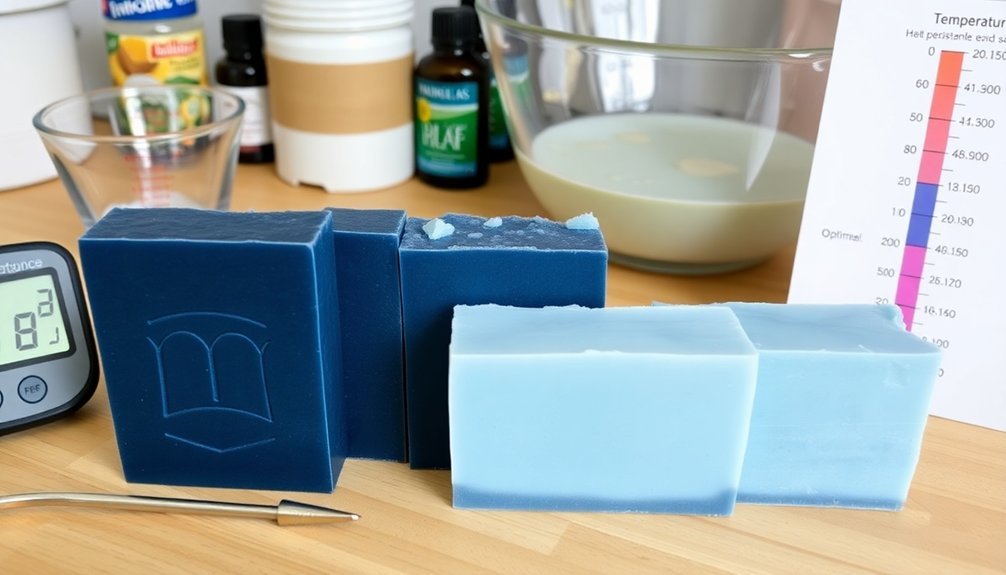
While many aspects of soap making allow for creative freedom, temperature control remains a critical technical factor you must master. The ideal soaping temperature for cold process soap making falls between 120-130°F for both oils and lye solution. This range guarantees proper saponification while preventing issues like false trace.
Experienced soap makers know that maintaining a temperature difference of less than 10 degrees between your lye solution and oils creates a smooth mixture. For special techniques, you might adjust accordingly.
Cooler temperatures (100-110°F) help avoid gel phase and work well with heat-generating fragrance oils. Conversely, higher temperatures (131-160°F) promote gel phase for vibrant colors but require careful temperature management to prevent defects.
Remember that lye solutions can reach 200°F initially, so cooling is imperative before combining with oils.
Troubleshooting Hot Temperature Issues in Your Soap Batch
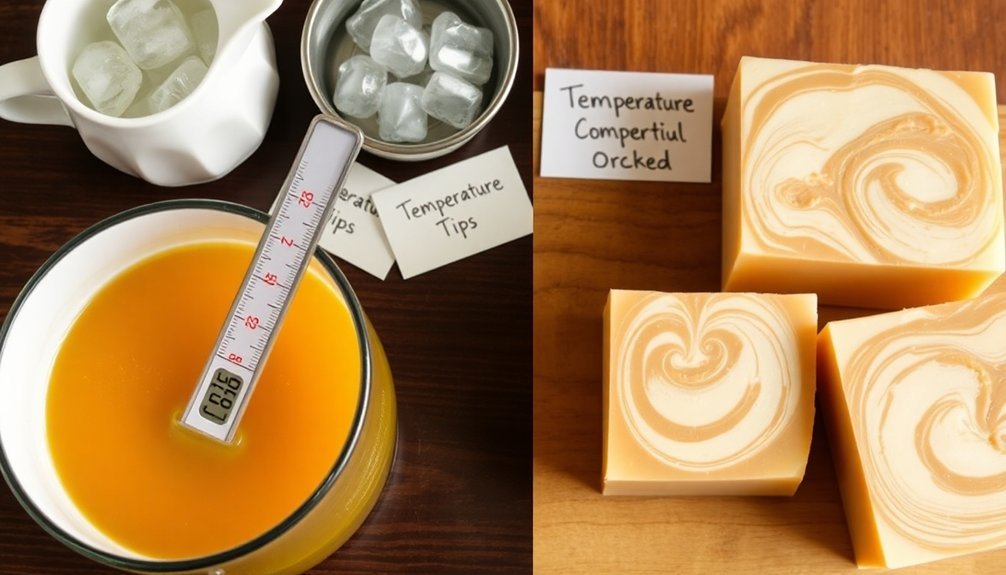
Soap making becomes challenging when temperatures climb too high. When your batch reaches 131-160°F, it enters gel phase, which enhances colors but risks alien brain formation or soap volcanoes.
To prevent these issues, monitor both your lye and oils carefully, keeping them within 120-130°F for ideal results.
If overheating occurs, you'll notice glycerin rivers forming in your soap. Combat this by switching to hot process methods or adjusting your soaping temperatures downward.
When working with specialty ingredients like beeswax or LabColors, higher temperatures can be beneficial but require vigilant monitoring to avoid false trace.
If your mixture gets too hot, simply let it cool slightly before pouring.
Alternatively, you can insulate your soap to promote controlled gel phase, which improves texture without risking overheating complications.
Solving Cold Temperature Problems During Saponification
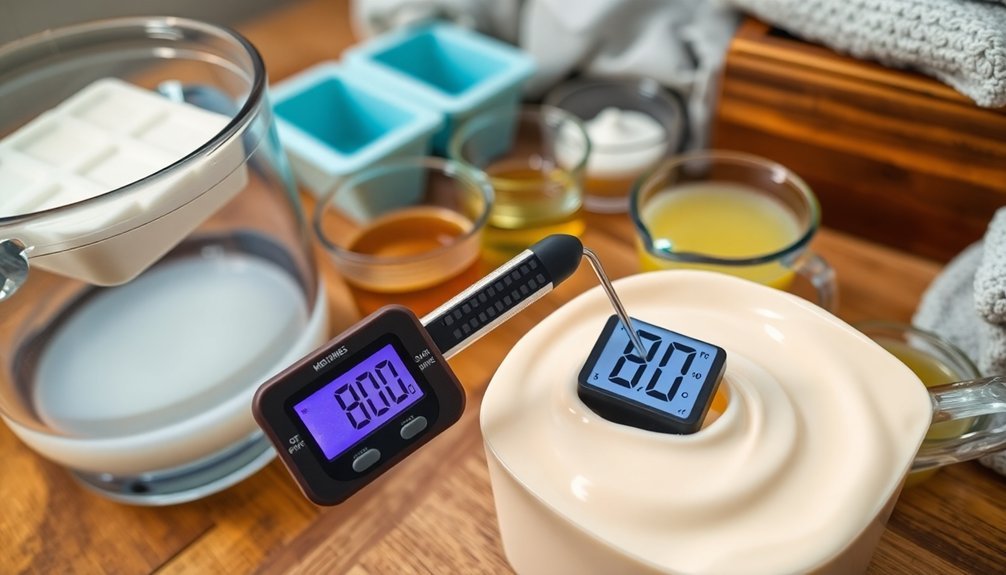
Just as overheating creates challenges, cold temperatures can derail your soap-making process completely. When your lye solution falls below the ideal soaping temperature range of 120-130°F, you'll face solidification issues and difficulty reaching trace. Always allow cold lye to warm naturally before combining with oils.
| Problem | Cause | Solution |
|---|---|---|
| Slow trace | Cold lye solution | Warm to 120-130°F |
| Soda ash | Low room temperature | Adjust environment, insulate |
| Uneven texture | Failed gel phase | Use insulation techniques |
Monitor your room temperature carefully—it greatly impacts saponification. If your mixture becomes too cold during processing, use your stick blender in short bursts to generate heat. After pouring, wrap your molds with towels or blankets to encourage the gel phase, which promotes uniform color and texture in your finished soap.
Essential Tools for Accurate Temperature Monitoring
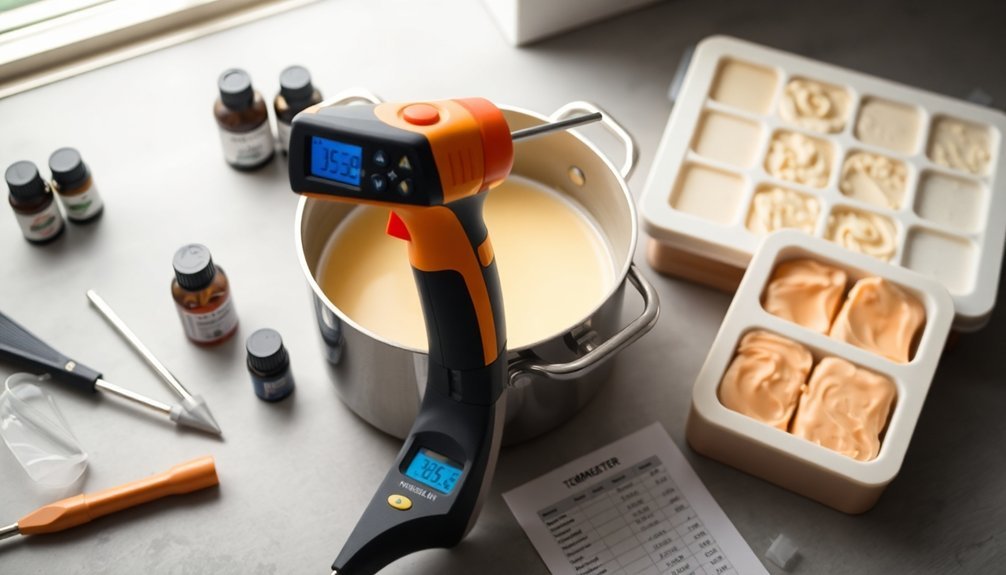
Because temperature precision makes or breaks your cold process soap, investing in reliable monitoring tools is non-negotiable. A dependable digital thermometer is your primary defense against temperature mishaps, accurately measuring temperatures of both lye and oils to guarantee they stay within the ideal soaping range of 120-130°F.
For thorough temperature control, add these essentials to your toolkit:
- Infrared thermometers – Provide instant surface readings of your oils, preventing dangerous overheating.
- Candy thermometer – Designed for high-temperature ranges, perfect for monitoring lye solutions safely.
- Water bath setup – Helps you control the temperature gradually when oils or lye need adjusting.
Remember to calibrate your thermometer regularly—even minor inaccuracies can greatly impact saponification and your final product's quality.
Temperature Adjustment Techniques for Perfect Trace
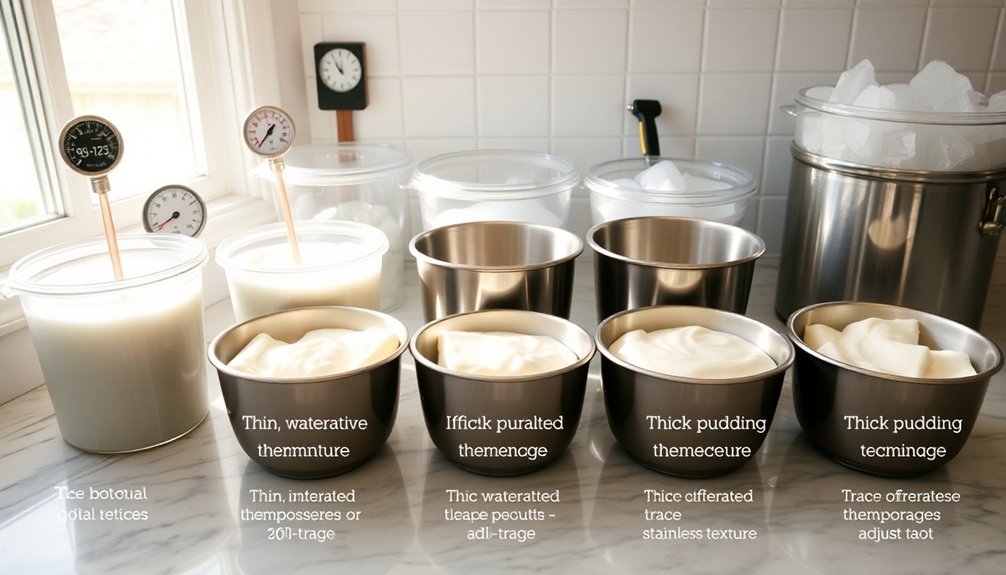
With your tools ready and calibrated, let's apply that precision to the soaping process itself.
Maintaining oils and lye solution temperatures between 120-130°F is essential for successful saponification in cold process soaps. Remember to cool your lye solution from its initial 200°F before combining with oils.
When working toward trace, use your stick blender in short bursts rather than continuous blending. This prevents premature hardening of your soap batter. If you notice your mixture thickening too rapidly, your recipe likely contains high percentages of hard oils.
Consider reformulating with more soft oils like olive oil to slow the process.
Finally, adjust water content strategically – too little accelerates tracing while too much delays it. This balance depends on your specific oil blend and desired working time.
Frequently Asked Questions
How to Cure CP Soap Faster?
To cure CP soap faster, insulate it to promote gel phase, maintain a warm dry environment, improve airflow with fans, cut into smaller bars, and keep consistent ambient temperatures between 70-80°F during curing.
What Happens if You Put Too Much Lye in Soap?
Too much lye in your soap creates a caustic bar that'll irritate or burn your skin. You'll notice it's brittle, crumbly, doesn't lather well, and feels slimy when wet. Always use a soap calculator for safety.
Why Is My CP Soap Separating?
Your CP soap's separating likely due to temperature mismatches between oils and lye, insufficient stirring, or problematic fragrance oils. Confirm both components are 120-130°F, mix thoroughly until true trace, and use tested fragrance oils for better results.
Why Is My Cold Process Soap Still Soft After 24 Hours?
Your cold process soap is still soft because you might've mixed at the wrong temperature, used too many soft oils, or didn't reach proper trace. Try adjusting your oil ratios and ensuring you've achieved yogurt-like consistency.
In Summary
Mastering temperature control is your key to successful cold process soaping. By monitoring your oils and lye solution properly, you'll avoid the pitfalls of extreme temperatures. When you're equipped with the right tools and techniques, you can troubleshoot any temperature-related issues that arise. Remember, practice makes perfect—soon you'll instinctively know when conditions are just right for that ideal trace and perfect batch every time.

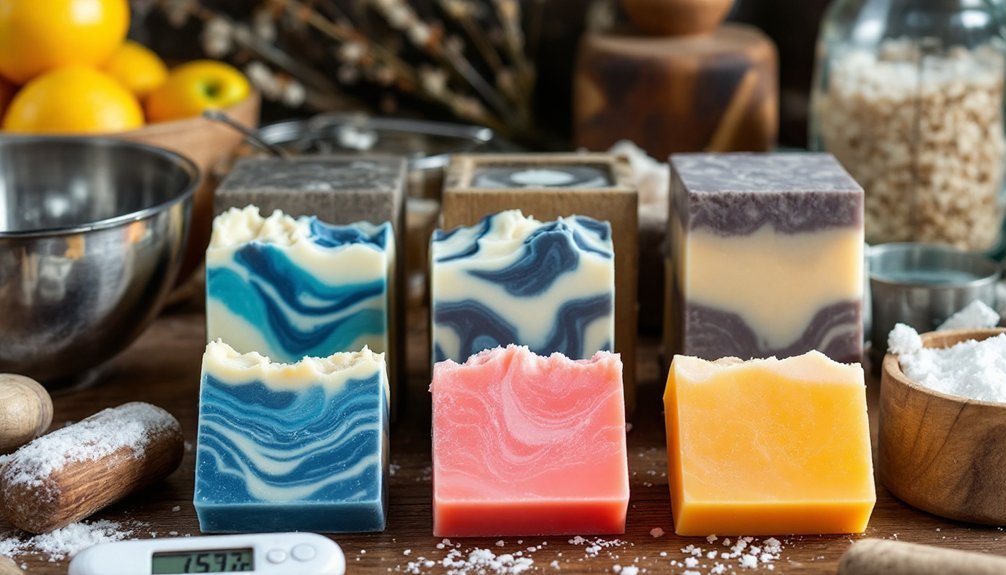



Leave a Reply